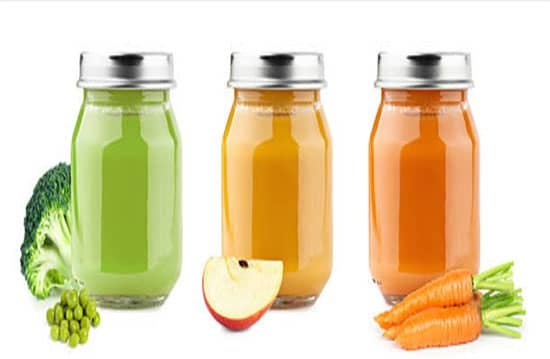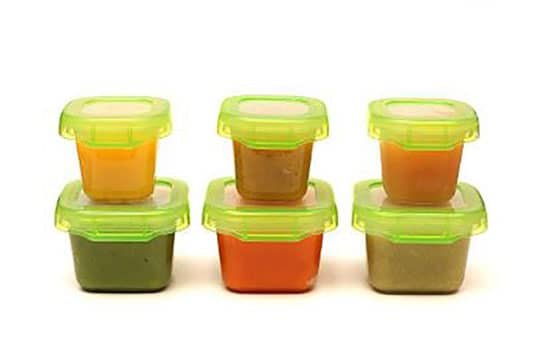

When preparing baby food in a baby food mill or baby food grinder certain foods such as apples potatoes and pears will be difficult to grind if they are not softened while raw meats will need to be cooked beforehand. It is advisable to add up to three tablespoons of water to the food before pureeing. The amount of water added will vary depending on the consistency of the food. For example, if you boil potatoes you may not need to add water at all. If you cook chicken you may need to add a little water. The amount of water you need to add to the food depends on your baby's ability to chew. For example if you are just beginning to introduce your baby to solid foods you may want to add the full three tablespoons of water or more to the food you are pureeing to achieve a soup like consistency. Always cut the food into pieces. Put cooked food through the baby food mill. (The skin and seeds will stay in the mill.


You should blend the food and water together in the baby food mill. When the food and water mixture is well blended you can serve it to your baby. Use a sieve or strainer to further thin homemade baby food. These utensils may be particularly useful for foods that have stubborn skins such as peas and green beans. Put the food into the sieve or strainer and push it through into a clean bowl. Repeat the process as many times as you need. As soon as the processed food has cooled, cover, refrigerate or freeze immediately. Always store pureed foods in the refrigerator for no more than three days. Never refreeze already frozen baby food. Add your cooked food to your blender or food processor and blend to the consistency your baby requires. If needed add liquids such as breast milk, formula, water or the water from the food you cooked to thin out the baby food.
Ice cube trays are an efficient and easy way to freeze homemade baby food giving you food cubes that can be easily portioned. The benefit of using the food cubes method is that you have minimal waste while still being able to “mix and match” nutritious foods for your baby. Spoon the baby food made into ice cube trays using a clean utensil and cover the filled trays with plastic wrap. Once the food cubes are frozen, pop them out of the trays and store in clean freezer bags. You can thaw the pureed baby food cubes in a microwave or in the refrigerator over night. Ensure that the cubes remain in a closed container and not in an uncovered bowl.

 RETURN TO THE HOME PAGE HERE
RETURN TO THE HOME PAGE HERE